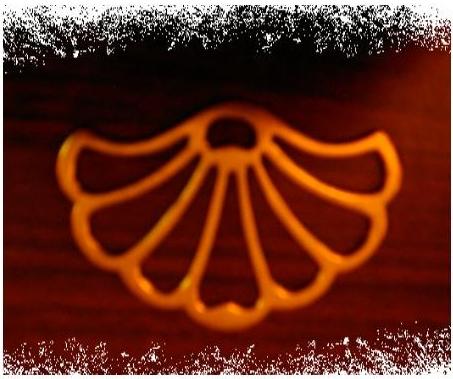the Divine Flow from Above




These Hebrew letters depict the faculties of human beings reflecting
Looking at these four letters, one above the other, we see a representation of each person's consciousness and potentials.
Since our consciousness and potentials are seated and expressed through the body, these four letters also depict the structure of the human body.
Creation of the essence of humanity is described in Chapter 2 of the Bible's Book of Genesis (from verse 7 onward). In Genesis, human food is represented as "trees of the garden." For this reason, a person himself or herself is a "Tree of Life" – "you are what you eat," so to speak.
The four Hebrew letters above are Mem, Tsadik, Yud, and Heh. They spell three Hebrew words: m'tzaveh, m'tzuveh and mitzvah. In English, these words mean: "the one who issues a command," "the one who is commanded," and "the commandment" itself.
The forms of these four Hebrew letters describe the entirety of human nature and human potential.
“. . . the Tree of Life – the Divine flow from Above” – The roots of the tree of Divine flow are above, sources of nourishment for the Tree itself. As the Divine flow forms the structure which resembles a tree, this flow becomes closer to being tangible and available to the physical world – "lower." As this flow "descends," it becomes nourishment for human consciousness, our souls. Finally, the flow is tangible, in the form of the human body. The human body, being a vessel for consciousness and the associated expressions of consciousness, resembles the form of the soul. Even within our bodies, the most delicate senses are above, closer to their source in the Divine flow. Thus, the human form is a mirror of its source "above." Accordingly, human nature aspires to "rise" closer to its source – to deepen and widen consciousness.
(Perhaps we are aware of people whose nature is devoted to materialism. This nature is not the
[work in progress]
© 2009 David Brook (The editor added the red slash to prevent reproduction of this original work.)
retrieved from: Tanya in Plain English
See Toldos Ya'akov Yosef: Mem and tsadik are At-Bash for yud and heh. 'Mitzvah' is, therefore, a representation of the Shem Havay"a.
The tsi'ur of Adam HoElyon is the Shem Havay"a, as is known. This is the the tsi'ur of the Nefesh Elokis.
The Seven Noahide Commandments are indeed called Mitzvos. It seems to me that Mem-Tsadik-Vov-Heh — 'mitzvah' — could be a tsi'ur of the nefesh of Chasidei Umos HaOlam, l'havdil. For Umos HaOlam, Mem-Tsadik-Vov-Heh would then be a b'china of achora'im becoming a source for their klipas nogah.
The tsi'ur of Adam HoElyon, each letter above the other, is from behind – Chesed and kav ha-yomin are therefore on the right side of the screen/page – the yud component of the letter tsadik. G'vura is the nun component of the letter tsadik – and Nun Sha'arei Binah.
Note that the form of a mem also surrounds a white, inverse yud. The mem also has a kav ha-mafsik between the upper Chochmah and the lower, which is the concealed, white yud. Another aspect about the letter mem is that it is a composite of chof and vov, which equal the simple gematria of the Shem Havay"a.
Also see Sefer Ho'Arochim Chabad (Chabad Encyclopedia): The entirety of Shem Havay"a (Yud-Keh-Vov-Keh) in the At-Bash form is Mem-Tsadik-Peh-Tsadik Sofit (column 154, note 46; from Likutei Levi Yitzchok as he explains a concept raised in Pri Eitz Chaim).
This form of the Shem Havay"a seems to me to be a b'chinas achora'im, then becoming a source for the nefesh of Chasidei Umos HaOlam, l'havdil, which is from their Mem-Tsadik-Vov-Heh. Note that when the Mem-Tsadik-Peh-Tsadik Sofit form of the Shem Havay"a precedes Mem-Tsadik-Vov-Heh from above (makif; actually makif horochok), the final tsadik is the source of the lower mem — the mem of 'mitzvah'. This closed mem is an essential element of tselem, as explained in great detail in the Chabad Encyclopedia (columns 150-152, and elsewhere).
I have written extensively of how Tselem Elokim describes the ideal Tree of Life for Umos HaOlam, l'havdil, and the letters of 'mitzvah' describe this Tree of Life itself (on this page with its links).
Sefer Ho'Arochim Chabad. Volume 7.
Chabad Encyclopedia
From the editorial board of Otsar haChasidim Lubavitch
Includes bibliographical references and indexes
(Brooklyn, New York: Kehot Publication Society, 1979, 1987)
BM198.S42 1987
296.8'33
Library of Congress Catalog Card Number: 85-23763
ISBN 0-8266-5100-3 (set)
(Volume 6 has yet to appear)